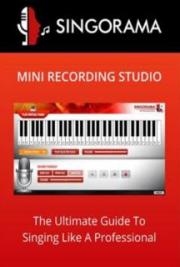CONTENTS
Chapter 1 - First steps
Chapter 2 - Equipment
Chapter 3 - Before you start
Chapter 4 - What you will need
Chapter 5 - Let’s go fishing

Chapter One - First Steps
The very first thing that you will require if in the UK, (unless under the age of 12 years), is a
Rod Licence available on line at;
http://www.environment-agency.gov.uk/subjects/fish/.
A Standard licence will permit the use of 2 rods
Do you intend to fish all year, just for a couple of weeks or just for 1 or 2 days, you can purchase a licence accordingly.
Where do you want to fish:
Unless you have a particular water in mind, you will need to find out what’s available in you region. These are often listed in various magazines, but usually only one or two per week. Yellow pages may have details of large commercial waters, but by far the best source of information is a tackle shop in your chosen area, their details can be found in yellow pages, or if going away on holiday www.Yell.co.uk
Day Ticket Still Water Venue
Open to General Public & available to fish often with no close season. Day Ticket charges vary. The venues Rules & Regulations will also vary double check before you commence fishing
River
Fishing on ANY river is NOT allowed between 15 March to 15 June inclusive. The coarse fish Close Season applies to all rivers, streams and drains in England & Wales, but does not apply to some still waters. There are, however, some exceptions that retain the Close Season - the Broads always check first.
Large proportions of rivers are governed by Private clubs and non-members are not allowed to fish, unless the club operates a day ticket scheme.
Club Water
12 month Annual Subscription will be required. Club waters often incorporate a Close Season, however there are exceptions ALWAYS check dates with the Club Secretary if there is a Close Season.
Chapter - Two Equipment
If you have not fished before then I strongly recommend you do not go mad in your local angling shop and spend lots of money. Choose from the very basics you will need as mentioned later from the listed below:
RODS
 WAGGLER FLOAT ROD
WAGGLER FLOAT ROD
Waggler - sometimes known as a Float Rod. This does not need to be an expensive item, there are some great deals available, even now in supermarkets.
 TELESCOPIC ROD
TELESCOPIC ROD
If going away on holiday you might consider a Telescopic Rod, easily packed away in a rucksack.
JUNIOR ROD & REEL
For an extremely cheap solution you can even purchase a Small Rod & Reel for as little as £10.00.
 FIXED SPOOL REEL
FIXED SPOOL REEL
A good general purpose Fixed Spool Reel with spare spools incorporating a line hook-up clip, will be adequate to begin with. This enables you to use different main line strengths.
MAIN LINE
A . 2 -3lb - Silver Fish, Bream, Roach etc. Tench/Carp up to 4lb.
B. 4 - 6lb - All fish up to 10lb.
When fishing the Waggler this really is the maximum strength line to use.
Hook Length Line - this will usually be of a smaller diameter than the main line and usually slightly lighter in strength. This being for two reasons. A. The thickness of the line does not spook the fish & B. If you unfortunately get snagged on the bottom, it will snap and therefore you will only lose your hook. In other words
2 - 3lb main line use 1 – 2lb Hook Length
4 – 6lb main line use 3 – 5lb Hook Length.
HOOKS
There are basically two types of hook –
 EYED HOOK
EYED HOOK

SPADE END HOOK
All are available Barbed or Barbless and in different size
Eyed & Barbless - This is by far the easiest hook to tie for beginners and as more & more fisheries are banning Barbed hooks now Barbless are very popular. Eyed & Barbed - Easy to tie on, but please check if they are allowed where you want to go fishing
Spade end & Barbless - You will need to purchase and learn to use a Hook Tie (a tricky, but clever device)
Spade end & Barbed - As above & again check if allowed.
These hooks will need to be tied to your hook length, this can be done either by hand or with a hook tie.
HOOK TIE If unsure about using a
Hook Tie, pre-tied hooks are available from your local tackle shop.
The size of hooks again vary greatly, I would suggest as a beginner No.14 for larger baits, i.e. Luncheon Meat / Pellets/Bread. No.16 for Sweetcorn and a No.18 for Maggot / Worm.
I have never found barbed hooks to be any better, in fact the contrary, a Barbless hook is streamlined & sharper. If you always keep your mainline tight when playing a fish you will never allow a fish to become unhooked. The tying of your line to the hook is purely preference, I tend to use eyed for heavier line and spade when fishing 2 -3lb line.
 FLOATS
FLOATS
Any Floats you purchase will have details inscribed regarding the amount of split shot weights you need to use.
Straight Peacock Waggler (heavier), suitable for casting out at distance and in rough weather.
Medium Float for most waters
Stick float for river fishing. This float is NOT designed to remain static, but to run with the flow of the river.
WEIGHTS
 SHOT DISPENSER
SHOT DISPENSER
The simplest solution to begin with is to purchase a Shot Dispenser. This holds difference split shot weights.
LANDING NET & HANDLE
Absolutely Vital........... No one should even attempt to land a fish without one.

 TACKLE BOX
TACKLE BOX
In the beginning you could survive with a carrier bag and a tin box, but there are now many inexpensive Tackle Boxes available approx. £20.00. Sturdy enough to use as a seat waterproof to store away all your equipment & complete with a shoulder strap for easy carrying.
MISCELLANEOUS ITEMS
Catapult
Scissors
Disgorger - Used to take out the hook from the fish, if not hooked in the lip. Towel
Bait Boxes
Hook Tie if using spade hooks
Can Opener
It is important to note the above equipment is for general-purpose coarse fishing. All waters are different and it is recommended that you learn in clear open water and avoid snags. Lilies etc. Which will require knowledge and skill to negotiate the safe landing of a fish.
As with all sporting equipment there will be choices galore, however this is a beginner’s list as you progress and become more confident so will your choice of tackle.
BAIT
The list for bait could be endless. There are no hard and fast rules, what will work one day, the next day will not. If you hate maggots, don't worry there's plenty of other baits, marshmallows are great in the summer for carp & angler or try some smelly cheese. Basically almost anything goes! You could spend a small fortune on bait, yet the best bread to use is supermarket value @ 20p! It is a rare thing to go fishing and run out of bait, usually at the end of the day it gets thrown in the bin, a bit of a costly waste when you think about it, so don't load up your box with too much bait. Even more important don't over feed your swim especially in the winter. Carp are about the only fish that will take a fair amount of bait, but even then usually only in the summer months if you’re fishing waters where you know there is an abundance of fish.
The BEST bit of advice regarding Bait I would offer is to take a walk around the water you want to fish & TALK to other anglers. Anglers LOVE to talk fishing. (a small word of warning here, NEVER attempt this if there is a competition taking place).
ALL waters are different and you need knowledge of what works where you want to go fishing. Books and Magazines are great sources of information, but an article on a specific way to fish, when applied, just may not bring results where you want to go.
Chapter Three - Before You Start
ROD REEL & LINE SET UP
Unless you have purchased a rod already set-up with reel & line, you will need to firstly purchase mainline. I have chosen for now 4lb Main Line. Take your reel and attach to a fully extended rod. With the Main Line feed it through the eyes on your rod working from the top of the rod down to the reel. Lift back the bale arm, make a loop in the line large & fit over the spool on the reel. Tighten this loop and trim off any excess line, return the bale arm back into position. To wind the line on to your reel ask a friend to hold the spool, with the line slightly taught, (little tip, place a pen through the spool, this helps the line come off more smoothly) whilst you slowly reel in the line onto the spool. Now all that is required it to attach a weight to the end of your line.
CASTING
OK here goes, lets assume you have NEVER held a fishing rod before, the first thing you will need to learn is to cast.
Do you have a large garden or QUIET open area near you? There is no need to pay to go on a lake to practise your casting. Having got your rod, reel and line, you will need to attach a small weight about 1oz.(NEVER put on a hook). Then away you go. It is VITAL before you swing the rod behind you to ALWAYS look behind to double check there is no one standing there, or a bush you could snag on.
Pick a target feature in front of you at some distance and use this as your marker for direction not your distance. For the moment don't worry too much about how far you can cast, more important is to keep your cast in a straight line out in front of you. If you imagine a 180-degree arc, you are aiming for 90-degrees. This does not happen overnight and can take many months to fine tune, all you are doing at the moment is learning how the rod, line & weight react when you cast. After an hour or so you should feel confident to start fishing.
Chapter Four - What You Will Need
CONTAINER WITH THE FOLLOWING
Hook length x 3lb.
Packet of Eyed Barbless Hooks x size 16 Split Shot Weight Dispenser
Disgorger
Scissors
Can Opener (if tins of bait have no ring pull) Floats
Catapult
HOOK BAIT
Tin of Sweetcorn
Tin of Plain Luncheon Meat
¼ loaf of white sliced bread
The above are cheaper from your local supermarket
PARTICLE BAIT TO FIRE OUT
Maggots
Sweetcorn
Chopped Luncheon Meat
5ml Sinking Pellet
The following is not essential, but useful:Bait Box for ½ pint Maggots Red & White Small tub of worms & 4ml pellets
CLOTHING
Be sensible, check out the weather, even in the middle of summer, if your sitting in the shade (which could happen at some point during the day) it gets COLD. I always say the best way to warm up is to catch fish. Why? Because you are moving. Sitting or standing for long periods in one-place stops your circulation and you will feel cold. So take that extra jumper/coat/socks/ hat, chances are you may need them. Likewise on hot sunny days take plenty of water and Sun Cream, it’s easy to get badly burnt from the sun & the reflection off the water.
I have not mentioned umbrellas yet, as they are a little expensive, but do protect you from the rain/sun and wind, again it’s possible to pick one up second hand if you feel you will need one. Word of caution, don’t try to cast whilst sitting underneath one, you’ll end up in an awful muddle!
Chapter Five - Lets Go Fishing
When you arrive at your chosen water take a walk round, don’t sit down in the nearest swim. You need to take a good LOOK AROUND & check for overhanging trees, access to the water, are there any snags or plant growth out in front of you what direction is the wind blowing. If you are with a friend, it will usually be necessary for you to have a swim each, double swims are not that common and if you try to squeeze in together, you will not be able to fish correctly and may be told off by the local land owner.
The next thing to do is unpack and get comfortable, your going to be they’re for quite some time. You will need to be a little organised. Get into a routine when you fish, i.e. landing net to your left, bait to your right, lunch behind you etc. that way you will be able to put your hand on any piece of equipment you may need at short notice. A fish could be lost whilst you are scrambling around trying to reach your landing net. Worse a fish will suffer unnecessarily if you don’t know where you put your Disgorger. GET ORGANISED, you will catch more.
Open your tins and sort out your bait. PLEASE be careful & put away empty tins & lids.
If there’s no nearby bins TAKE THEM HOME.
SETTING UP THE WAGGLER
The Waggler is my favourite way to fish, but not always possible if the weather is wrong. It's near impossible to cast if you have a head on wind, whereas if it's blowing from behind it’s a lot easier.
Regarding the visibility of the float, don't leave the float sitting too high in the water, just to make it easier to see, this will reduce the signs of a bite, as sometimes it will only dip a few millimetres.
You will need to slide your float onto the line and use a split shot weight either side to hold the float in position. Before you set your depth & add your hook length, just plop the float a few metres out to check you have the correct weights, leaving the float sit a little proud, so you can add a couple of No.8 weights further down the line.
Now make a loop at the end of your main line and again on your hook length, feed one through the other pull tight and trim off excess line. Hook length should be about 18" long. Attach the hook and add a couple of No 8 weights spaced evenly apart down the main line.
Now (If you have done your homework & spoken with other fishermen), you will know the approximate depth of the water, therefore set the float accordingly by sliding the float & weights up the line until the desired distance between hook & float is reached.
If however the depth varies, then you will need to plumb the depth. A quick easy non technical way is simply after you have set your float to the correct buoyancy, is to take a large split shot weight and clip on to the line next to your hook & cast out. Your float will sink under if you have set the float too short, if your float sits perfectly continue to move your float & weights down your line, until the float is JUST visible. Reel in remove your plumb weight and move your float a ½” back up the line
The beauty of a Waggler is that you can fish any depth. Fish are not regimental in where they can be found. It will be necessary to maybe start off at the bottom and decrease you depth by 6 - 10" until you get a bite (this is done by sliding the float and fixing weights down the line).
 LINE CLIP UP
LINE CLIP UP
The distance you choose to fish can be set on your reel. Just make a couple of casts, when you feel you have cast at a comfortable distance, before you start to reel in, take the line and place it round the Line Clip Up on the reel.
This means that every time you cast it will be at the same distance. A word of caution, if you are fishing where there are large carp i.e. over 8lb, this is not always recommended as when the fish runs the tension on the line could snap your hook length.
 CATAPULT
CATAPULT
Choose your bait and away you go. Not forgetting every couple of minute’s fire out a small pinch of particle bait over your float with a Catapult
Once you have cast out, with practice you will learn to sink your line. This is necessary for still waters as any tow on the water or wind will drag your line and float. Simply place the tip of your rod a couple of inches under water and flick the tip sharply up.
NEVER, NEVER, NEVER leave your rod unattached to either your box or your hand, I have seen TOO MANY rods lost when an unexpected large fish has taken the bait/hook/line & ROD.
When your float dips under the water GREAT you have a bite. (Note I said you have a bite NOT a fish) this is where you now learn, the difference between a bite & hooking a fish. When you see the float dip under you must strike. Never too sharply else all that will happen is you will pull the hook out of the fishes mouth, but sharp enough to hook the fish, trial & error will teach you the best method.
Once you can feel the fish you will need to make sure your line remains taught. If the line becomes slack the fish can unhook itself. Slowly start to reel the fish in, take your time, especially if it feels like a large fish. Once your fish nears the bank approx. 12’ away reach for your landing net. Make sure it is in and under the water BEFORE you bring the fish in too close. The disturbance of lowering your net in can seriously spook the fish and your line may snap with the fish’s sudden jerks. Slowly manoeuvre the fish to the landing net making sure not to allow it to get too close to the bank, you need room to manoeuvre the net & fish.
 ANTI-REVERSE
ANTI-REVERSE
Once safely in the net, release the line Anti Reverse Button on your reel to let the line run free, Place down your rod and bring in your net & fish. Well Done - you’ve caught your 1st fish.
 DISGORGER
DISGORGER
With most Barbless hooks you should be able to just pluck out the hook from the mouth, however if it has swallowed the hook you must use a Disgorger to release the hook.(Very difficult in word form to explain how to do this, any reputable tackle shop will show you how, when you buy one).
Now carefully lower the fish back into the water.
Often people like to take photos of their fish, if you had previously thought about this, you will have your camera close to hand. If you are on your own and need to place the fish down to photograph NEVER lay the fish on hard ground or a dry towel, as this can damage the delicate scales. Be as quick as possible, remember the fish needs water, imagine if it were in reverse and the fish had you underwater taking a Picture of you! Just one more IMPORTANT point REMEMBER to push back the anti reverse button, before you cast out again.
That’s about it, it only leaves me to say ALWAYS at the end of the day check you have left nothing behind (it can be an expensive mistake) remove all rubbish especially open cans and old hooks.
I hope this will be the start of Many Happy Days Fishing to come.
Why not check out my web site for more ‘How To’s’
www.how2begin.com

Copyright 2007 how2begin.com All Rights Reserved
copyright how2begin.com 2007 all rights reserved


















 Copyright 2007 how2begin.com All Rights Reserved
Copyright 2007 how2begin.com All Rights Reserved 


